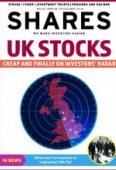Archived article
Please note that tax, investment, pension and ISA rules can change and the information and any views contained in this article may now be inaccurate.
Stagflation fears trip up global stock markets

The mood on the markets was hardly celebratory as England lifted its lockdown restrictions on 19 July. Gloomy warnings from the UK Government, rising Covid-19 cases linked to the Delta variant and growing signs of inflationary pressures all helped to drive the FTSE 100 to a two-month low on the day.
The fear now stalking the markets is one of stagflation. In simple terms, this means a combination of rapidly rising prices combined with slowing economic growth as mounting global infections driven by coronavirus variants hit activity.
The danger of this scenario is that central banks will be constrained in their ability to stimulate growth by lowering rates or ramping up asset purchases for fear of stoking their overheating economies any further, or worse that they might be forced to accelerate rate rises.
INFLATION RUNNING AHEAD OF EXPECTATIONS
Evidence of inflationary pressures continues to mount. The latest consumer price index readings from the UK and US for June came in ahead of expectations at 2.5% and 5.4% respectively year-on-year.
The causes of inflation are numerous and include pent-up demand built up during the pandemic further boosted in the US by stimulus cheques.
The rising cost and dwindling availability of raw materials and components are significant factors. Notably, these include micro-processors used in a more digitised world as well as the shipping containers required to get products and equipment where they need to be.
Staff shortages in key areas, and people moving off furlough and associated reduced levels of pay, are also driving up wages.
Several firms have added their voice to warnings of pressures on profitability from rising costs. This includes Europe’s largest home appliances maker Electrolux and vehicle manufacturer Volvo flagging components shortages which are affecting profitability and their ability to capitalise on robust demand.

On 20 July, mixing drinks maker Fevertree (FEVR:AIM) saw its shares sink 7% to £22.81 despite upgrading revenue guidance as investors were spooked by a warning of margin pressure thanks to global logistics disruption and raw material costs which it expects to persist into 2022.

These examples show the market could be in for a rocky ride as investors react negatively to the way cost inflation is undermining any benefit from rising sales.
For now, most politicians and central bankers are sticking to the message that this period of rapidly rising prices will be short-lived but once the inflation genie is out of the bottle it can be hard to contain.
EARNINGS DOWNGRADES
The share price performance of so-called reopening plays has turned negative of late, and this has been matched by slumping earnings forecasts.
While earlier messaging from prime minister Boris Johnson and his cabinet focused on the ‘irreversibility’ of the lifting of restrictions, this has been notably absent from the latest briefings.
This factor, plus a last-minute decision to introduce compulsory vaccine certificates for nightclubs and other indoor crowded venues from September, will contribute to fears that the long-awaited recovery in the hospitality and leisure space could bump up against rising Covid infections, hospitalisation and mortality rates and a potential reintroduction of some protective measures.
MOUNTING UNCERTAINTY
The uncertainty on its own could be enough to knock the sector’s fragile recovery off course. This is troubling given these businesses were likely to play a big part in any rebound in corporate profit.
If we do end up in a stagflation scenario it is unlikely to be good news for investors. Althea Spinozzi, senior fixed income strategist at Saxo Bank, says it could change investors’ approach towards their investments completely because it means that economic growth might not be strong enough to sustain record high asset prices.
‘Valuations will need to correct according to the real economy’s activity. Otherwise, nominal growth (real growth plus inflation) may continue to rise through inflation, eroding value from asset prices.’
WHERE TO INVEST DURING STAGFLATION
Spinozzi highlighted several areas which could perform well, at least in relative terms, in the event of stagflation.
These include inflation-linked bonds, commodities (although probably only in the short term) and shares in consumer staples firms as they sell products which are necessary to live regardless of the economic backdrop or the increase in prices.
Owners of health-related properties which have at least a proportion of their rental income linked to inflation, such as care home investor Target Healthcare REIT (THRL) and GP surgery landlord Assura (AGR), may also be on investors’ radar in a stagflation environment.
Demand for healthcare is largely uncorrelated from the wider economy, and the income-protection attached to their revenue stream should underpin their ability to sustain dividend payments.
Important information:
These articles are provided by Shares magazine which is published by AJ Bell Media, a part of AJ Bell. Shares is not written by AJ Bell.
Shares is provided for your general information and use and is not a personal recommendation to invest. It is not intended to be relied upon by you in making or not making any investment decisions. The investments referred to in these articles will not be suitable for all investors. If in doubt please seek appropriate independent financial advice.
Investors acting on the information in these articles do so at their own risk and AJ Bell Media and its staff do not accept liability for losses suffered by investors as a result of their investment decisions.

 magazine
magazine








